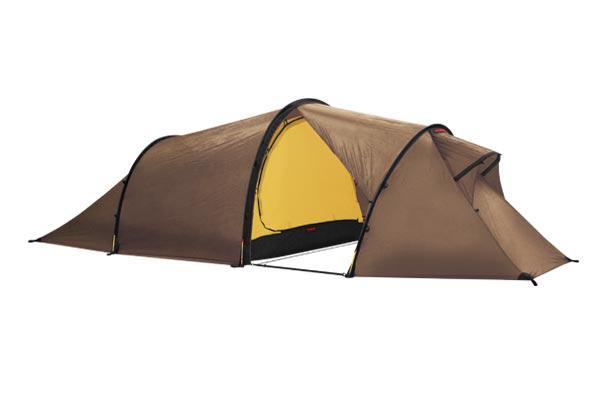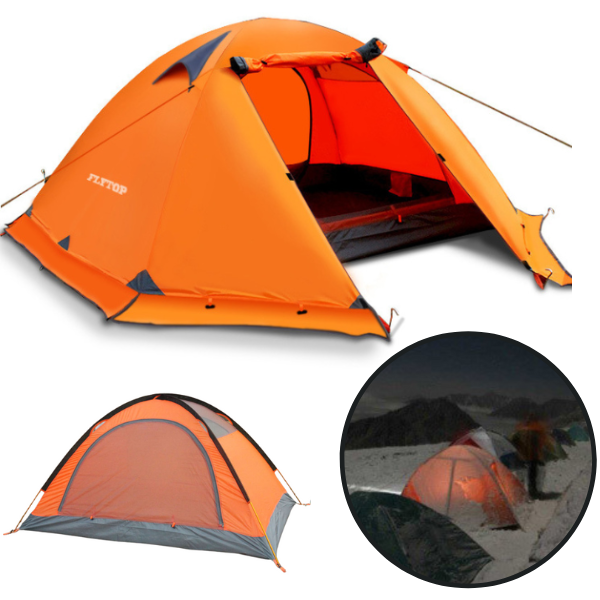People love outdoor activities very much, and there are many types of outdoor activities, including mountain climbing, rock climbing, hiking, camping, etc., and many outdoor activities require tents. Choosing the right tent can not only greatly improve the quality of your trip. The following is a detailed introduction to tent types.
01 Types of tents
Alpine tent: The main functionality is reflected in the wind resistance. The wind resistance is mainly reflected by the bracket. Most of them adopt a multi-pole cross structure to form the auxiliary force of the poles to achieve the best wind resistance. The disadvantage of this structure is that it has an excessive weight, so this type of equipment is very targeted, usually for professional adventurers. Another main function of the alpine tent is to keep warm. The fabric of the current warm-type inner tent is scraped with a layer of resin pulp. This fabric is both warm and breathable.

Four Seasons Tent: As the name suggests, the four-season tent is designed for consumers who are extremely passionate about camping. Unlike the mountain tent, it may not have strong wind resistance, but it has good ventilation and ventilation functions. Compared with the high mountain tent, it is lighter in weight and can be used in spring, summer, autumn and winter. Generally, this type of product has a double-layered large door. One layer is made of mesh for ventilation in three seasons, and the other layer is made of breathable cloth to keep warm in winter. This structure is the biggest feature of the four-season tent.

Three quarters Tent: Designed for spring, summer, and autumn, it is a product that dominates the global tent market, because three-season tents occupy the main camping season for ordinary consumers, and it is also one of the reasons why major brands have the richest product lines. In the southern region of our country, a good three-season tent can even meet the basic camping needs of a basic mountaineer for a year. The function of this kind of tent is mainly for its ventilation. Especially when camping at night in the south, the human body will release a lot of heat and respiratory gases. In rainy weather, the atmospheric pressure is very low. These gases released by the human body will encounter the outer tent. The temperature difference will cause a conditional reaction, causing condensation water to adhere to the outer tent. This is very important for the space circulation of the outer tent. The waterproof index of the outer tent fabric of the three-season tent is generally between 1500mm and 2000mm. This kind of fabric is more than enough for general precipitation.
Family Tent: Currently, self-driving tents are very popular in Europe, America, Japan and South Korea. This kind of tent has a large space and is generally designed with a main hall and a bedroom. It is a good family gathering equipment.
Pointed tent: Including the four-corner pyramid and the hexagonal pyramid, it is a common pole-less tent, which is supported by one (or two foot-to-foot) trekking poles in the center of the tent. There is no need to hang an inner tent in the pyramid. If it is hung, it can be divided into full inner tent and half inner tent. In addition to the difference in size, when using a full inner tent, the tent poles must be supported inside the inner tent, while a half inner tent must be supported outside the inner tent. Compared with ordinary dome tents, pyramid-type tents are less likely to accumulate snow, and the bottom is better windproof. Because it has a certain streamlined design, if the foundation is relatively balanced, the wind resistance will be better than some crisscross tents.

Tunnel tent: In fact, the Eurotunnel Tent is the most highly regarded, and as long as you master its construction skills, you will become obsessed with it. Because it has perfect space, excellent wind resistance, large foyer. Tunnel tents are divided into two structures: internal hanging type and external hanging type. Especially the internal hanging type allows you to quickly set up in harsh environments and avoids the embarrassment of equipment being soaked by rain. The method of supporting the tunnel tent is actually very simple. It is best to choose a soft ground that can be placed on the ground. First, pull up the four corners with symmetrical oblique angles, and then fix the remaining fixed points. You can also use stones on hard ground that cannot be placed on the ground. , sandbags, etc. to fix.
02 Tent style
Tents are designed with different uses in mind and come in different styles. As far as the appearance of the tent is concerned, common tents are roughly divided into five styles.
Triangular tent: Herringbone iron pipes are used as supports at the front and back, and a horizontal bar is connected in the middle to hold up the inner tent and install the outer tent. This is the most common tent style in the early days.
Dome-shaped tent (also known as yurt type): It adopts double-pole cross-support and is relatively easy to disassemble and assemble. It is currently the most popular one on the market.
Hexagonal tents: Use three or four poles for cross support, and some use a six-pole design, which pays attention to the stability of the tent. It is a common style of "alpine-type" tents.
Boat-shaped tent: When propped up, it looks like a boat turned upside down. It can be divided into two-pole and three-pole support methods. Generally, there is a bedroom in the middle and a living room at both ends. The design pays attention to windproof streamlines, which is also common. One of the tent styles.
Ridge-shaped tent: It is shaped like an independent small tiled house, usually supported by four pillars at the four corners, with a ridge-like structural roof on top. This kind of tent is generally tall and bulky, and is suitable for motorists or relatively fixed field work camping, so it is also called a vehicle-mounted tent.
03 Things to note when purchasing
When purchasing a tent, you need to consider its intended use, such as summer, non-snow season, snow season or all-season use; the number of people the tent can accommodate; the space you want to have; the weight of the tent; the price you can accept, etc.
Manufacturers offer many different combinations of sizes, weights and designs, so you can choose according to your needs.
Regardless of whether you use a single-layer or double-layer tent, you must understand the waterproofness and breathability of the tent. If it is completely waterproof, moisture will condense on the inner tent and cause small puddles at the bottom. This moisture is generated by the exhalation of climbers. It may also soak the sleeping bag.
Cheap single-layer tents can only be used in the lower reaches of the forest and must be fairly ventilated. Because a single-layer tent is completely waterproof and breathable, it is best to choose a double-layer tent.
Different tent designs have different levels of support. You must consider your usage when purchasing, especially during the snow season. A lightweight tent should be spacious and sturdy enough to handle some special needs.
Generally, the two-person tent is the most commonly used tent because it is easy to carry and find a campsite, and it can accommodate three people or one person. The color of the tent is best to choose warm colors, such as yellow, orange or red. The eye-catching color makes it easy to spot when you're trapped. Cooking, especially gasoline-based stoves, should be avoided in the tent. This type of stove has a pungent smell, is prone to spilling fuel oil, and has uncontrollable firepower, all of which are potential dangers.
Especially when cooking in a waterproof nylon tent, you often feel suffocated. Cooking will also cause many small water droplets to condense inside the tent. If you really need to cook in the tent, it is best to do it outside the tent with good ventilation.